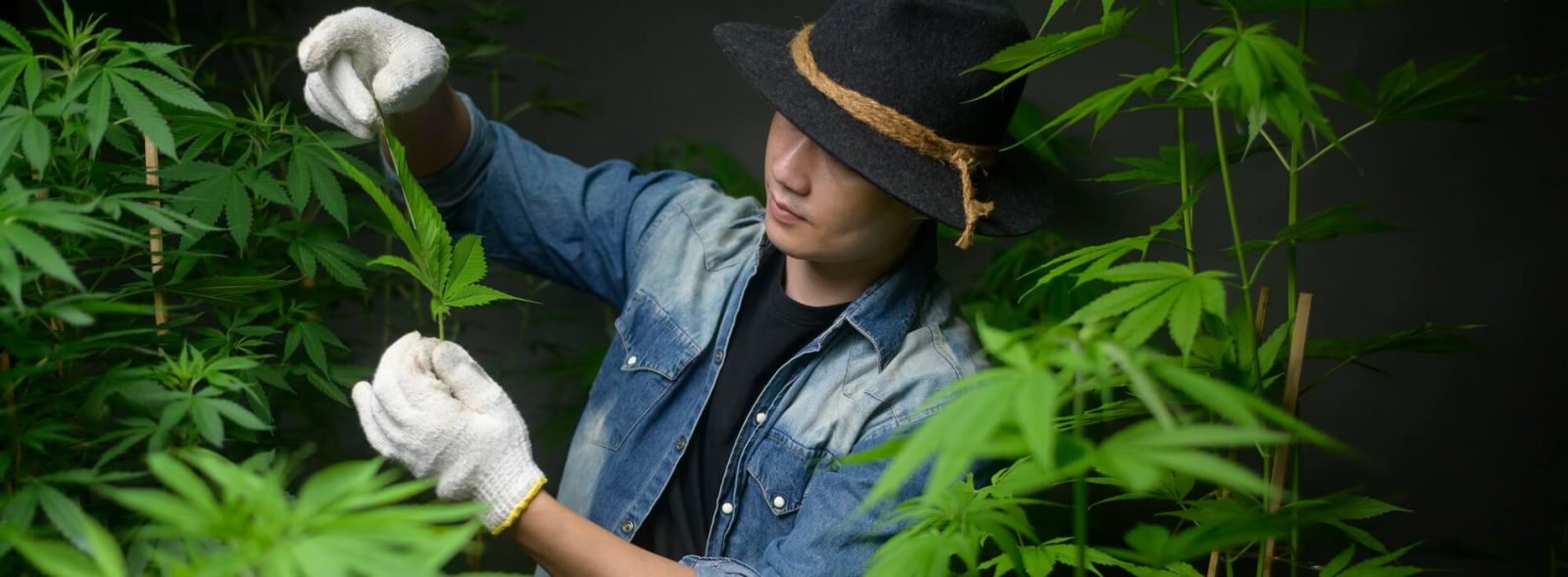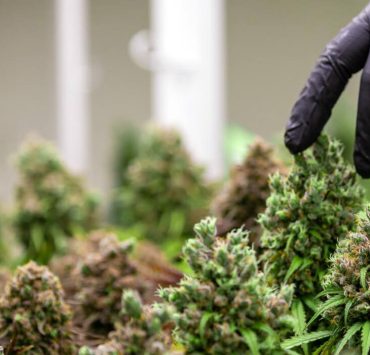Samik has been a literature student all along and uses…
How much weed does one plant yield? If this is what you are looking for, then this is the article for you. We have discussed some of the most important techniques and factors that decide how much weed one plant can yield. Without further ado, let us dive right in.
How Much Weed Does One Plant Yield?
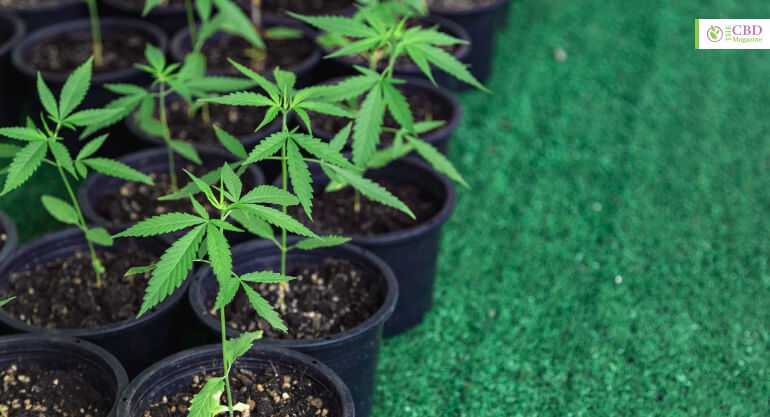
I need to get the basics out of the way before I can start discussing or elaborating on how much weed one plant yield. This will enable you to identify some of the terminologies that I will be throwing around.
First of all, cannabis is usually measured in dry weight. The usual terms that are used to weigh cannabis are pounds and grams. As a cultivar, you should not weigh the whole plant or wet buds. Instead, you need to extract the dry buds and weigh them to get a precise idea. This actually tells us about the total amount of usable cannabis.
With that out of the way, cannabis plants usually yield two to six ounces per plant. The amount highly depends upon several factors like light, quality of soil, hydration, etc. These factors not only affect the overall yield but also the quality of the harvest. Minor errors can greatly affect the overall growth.
Hence, there is no conclusive answer to how much usable cannabis your plant can produce. Still, I have gone and asked some of the veteran growers and collected some information regarding this question. And this article is the answer that I have come up with.
Indoor Growing: Soil Cultivation
One of the biggest debates in the marijuana growing community is indoor vs outdoor growing operations. This can be further divided into hydroponic vs soil growing. In the next three sections, we will look at some of the popular combinations that growers use.
In order to grow marijuana indoors, you need to make sure that you build an environment that can sustain the growth of the plant. By this, I mean that you need to take care of the pH level of the soil and water, the hydration, the lighting, etc.
Indoor growers usually work with LED grow lights. These help the operation with the illumination. These lights come in strips and need to be placed strategically where their intensity can be controlled.
In indoor growing operations, leaning towards soil cultivation, the pH of the soil and water matters the most. Cannabis usually prefers acidic pH levels of soil and water. Growers have identified that the optimal pH range is from 5.0 to 7.0. Meanwhile, the water that you use for hydration should have a pH value between 6.0 to 7.0.
One general rule of thumb is that one watt of light usually harvests one gram of cannabis. Therefore, two plants with a 1000-watt LED grow light setup and optimal soil/water pH can yield up to 2000 grams of cannabis.
Indoor Growing: Hydroponics System
While soil cultivation is something that most growers recommend for beginners, hydroponic cultivation is believed to increase the yield by 40% to 50%. Hence, going by the aforementioned conditions, one plant might produce 1500 grams of cannabis in a hydroponic system. Therefore, two plants will produce 300 grams of cannabis.
However, setting up the hydroponic system is the real challenge. It is not easy to set up a hydroponic growing operation without any professional help. Hence, you must only gravitate toward this operation if you feel like you can invest a fortune in your indoor growing system.
As per current prices, a hydroponic weed growing system can cost somewhere up to $770,000 or $100 per sq. ft. So, think before you start investing a fortune.
Outdoor Growing: Soil Cultivation
Outdoor growing is probably the least expensive option when it comes to growing your own cannabis. Howevevr, this comes at the cost of legality and greater opening for errors. Outdoor growing operations rely on several uncontrollable factors. As a result, it is very difficult to predict how much weed does one plant yield when grown outside.
Still, expert growers believe that one plant might produce one to three pounds of usable and dry cannabis per square foot. But since you are not controlling the light, moisture, pH, etc., you are opening your harvest for more margin of error. Moreover, pests also bug outdoor growing operations, and that is another can of worms that you need to deal with. No pun intended.
Factors That Determine Marijuana Yield
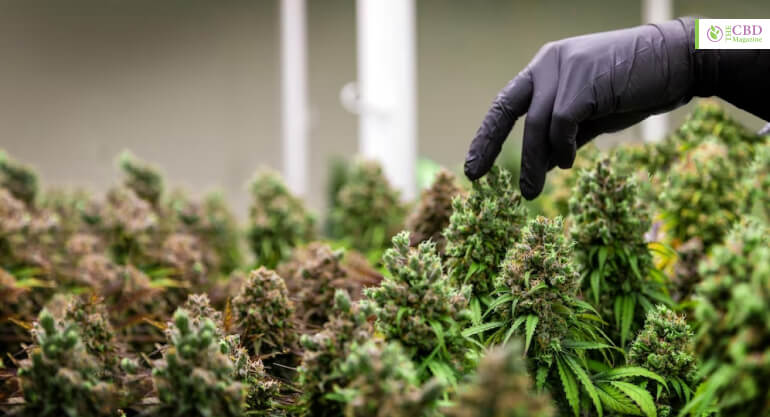
With the basics clear, I think that you are ready to graduate to the next stage and learn about some of the most important factors that determine the quality and volume of the yield. So, without further ado, let us dive right in and look at some of the factors that you need to know while growing.
Strain Type
One of the very first things that you need to know is that some strains are high-yielding while some are low-yielding. In today’s cannabis-growing landscape, there are several cannabis strains that are spliced together to create a newer strain. This hybridization can be aimed towards quality or quantity and sometimes both. So, choose your cannabis seeds effectively and intelligently.
Two of the most prominent low-yielding strains are White Russian Auto Feminised Seeds and Dubble Bubble Feminised Cannabis Seeds. These strains are amazing to grow for people who are short on space. Meanwhile, two of the most prominent high-yielding strains are Critical and Big Bud.
Light
The next factor that determines how much weed does one plant yield is the lighting. Lighting is one of the seminal factors of any growing operation. Cannabis plants require optimal lighting conditions in order to grow and improve structural integrity.
Photoperiod, or the amount of light that a cannabis plant requires, is around 12 hours. Therefore, you need to keep this in mind while building your own setup. Your indoor growing system should have 12 hours of light and 12 hours of darkness.
Insufficient lighting can cause the plant to mutate or produce sub-par yields. Therefore, be very cautious about this factor. I was suggested to use automated lights that switch on and off by themselves and work on a timer. This made the lighting a hassle-free business for me.
Growth Period
Whenever you are growing a plant, you need to be patient. You cannot and should not rush the process in any way. Before the right time, you will not notice a huge yield in any way whatsoever. So, you need to let your plant grow.
As per veteran growers, a cannabis sativa plant has a lifecycle of around 16 to 20 weeks. However, some growers use light deprivation techniques to hasten the flowering stage. This can reduce the time by up to two to three weeks. However, if you do not know what to do, I suggest that you stay away from it.
As a harvester, you should never rush the process and harvest an underdeveloped yield. This will only lead to a waste of time and money.
Amount & Type Of Soil
Cannabis plants require soil with a neutral pH and saturated with minerals like phosphorus, Nitrogen, and Iron. These nutrients are very important and help the plant to develop optimal structural integrity.
Most growers I have talked to have suggested that I use pH measuring kits in order to determine the right pH value of the soil. Also, pot your cannabis plant in a big pot. This is because the roots of the plan grow laterally, and a small pot might stunt the root growth. This, in turn, can affect the quality of the yield.
Climate
The next major factor that determines how much weed does one plant yield, is the climate. Some strains thrive better in a certain kind of climate, while others do not. If you try growing a dry plant in a humid environment, you will not like the results.
Furthermore, having the proper knowledge will not only ease your journey but will also enable you to manipulate conditions to improve yield. For example, if you perfect the climactic conditions a plant might require, you could actually increase the yield by 10% to 12%.
Grow Area Dimension
Cluttering is a big no when it comes to growing your own cannabis. Cannabis plants need optimal breathing space to flourish. Otherwise, the plants will start competing with each other for nutrients, water, light, etc. This can greatly hamper the growth and leave you with subpar results.
The growing tent or area must have enough space to house 3 plants at least. One rule of thumb is to plant one seed less than the growing space can accommodate. If your grow tent has space for 3 plants, I suggest that you plant only two. In this way, nobody will compete, and the results will be favorable.
Some Popular Growing Technique
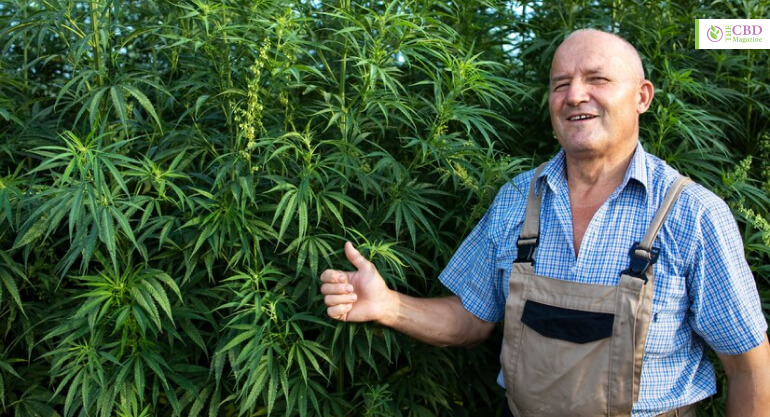
Apart from the growing conditions, veteran growers also involve some more techniques in order to improve their yield. Here is a detailed rundown of some of these techniques that you could use in order to enhance your cannabis yield.
SOG
SOG, or Sea of Green, is a perfect technique for growers with limited space. In SOG, a grower uses the space he or she has in order to plant several low-yielding cannabis plants. This not only enables the growers to grow several plants at the same time, but it also hastens the flowering stage. SOG can yield upto 1 gram per watt. However, the SOG technique involves a lot of collateral. Some plants might not even reach the flowering stage. So keep this one thing in mind
SCROG
SCROG and SOG are two sides of a similar coin. But in SCROG, there is a lot more focus on the verticality. SCROG technique trains plants to grow through a series of netting. This helps in building a canopy. As per veteran growers, SCROG can yield up to 1.5 grams per watt. However, this is an advanced technique that is only suited for people with expertise and experience. Otherwise, things can get a little tricky for somebody with zero to no knowledge whatsoever.
LST
LST, or Low-Stress Training, is another technique that every grower should know in order to grow. This involves growing cannabis by manipulating the shape of the bud. This is to enhance the chances of more lateral growth. Subsequently, this technique also encourages even the build-up of a canopy. This is a great technique that makes sure that every plant receives an even amount of light. Again, this is an advanced technique for growing cannabis. People with beginner’s experience should not try to replicate this. The margin of error is huge, and this can lead to kinky growth. As per sources, LST can yield up to 1.2 to 1.5 grams per wattage of light.
HST
HST is similar to LST, but HST involves aggressive printing and cutting. This is done in order to ensure controlled growth in certain areas. In fact, HST is mostly done by users in order to make their strain grow in a vertical format. In some cases, HST produced at least 30% more yield than most other techniques that we have discussed. Then again, you need expertise to know when, where, and how much to cut. This knowledge will be seminal for HST. Over-pruning and cutting will cause irreparable damage to the plant.
Topping
The final technique that growers use is called the topping. In this technique, you need to cut the top of the plant. This enables bushier growth and verticality. Growers claim that topping also increases usable or dry bud growth. This is a fairly moderate technique that beginner or intermediary growers can employ.
Conclusion
With that, we have reached the very end of our article on how much weed does one plant yield. While the answer might depend on several factors, growers nowadays have a lot of scientific techniques in their arsenal that they can use in order to improve and increase their yield. Keep following our page for more cannabis-related content and stories.
Additional Reading:
Samik has been a literature student all along and uses his fluidity to write about multi-niche topics. Aspiring to be a professional writer, he tries to analyze his topic from a critical standpoint but still adds a hint of personal perspective to the end product. Being a person having a general inclination toward global politics and documentary filmmaking, he also wishes to write and document more about numerous conflicts that are brewing in the different corners of the globe.






